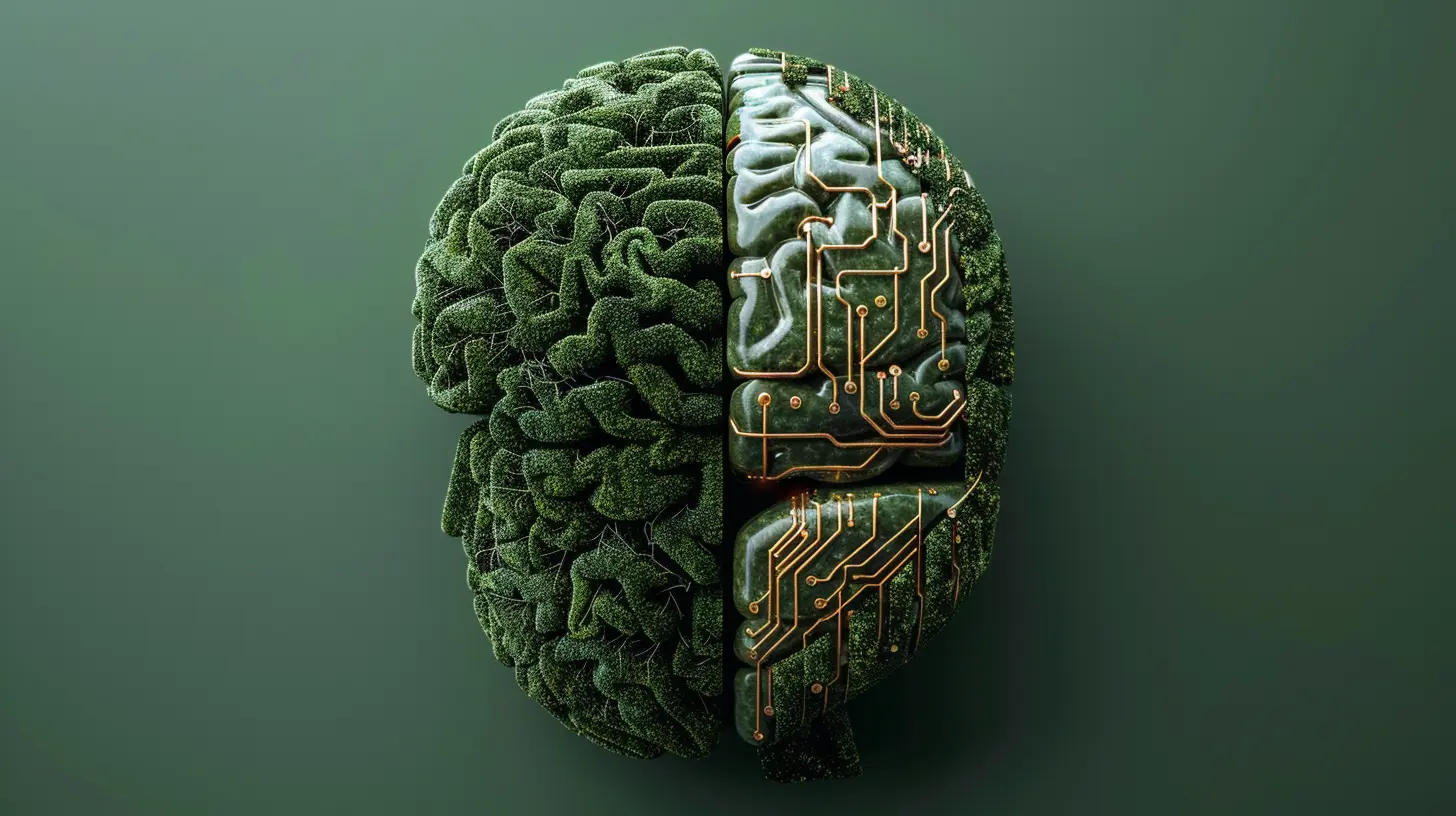The Challenges of Training Machine Learning Models on Biased Data
6 July 2025
Machine learning (ML) is the magic behind technologies like facial recognition, recommendation systems, and even self-driving cars. It’s a rapidly growing field with endless possibilities. But there’s a catch — the quality of machine learning models depends heavily on the data they’re trained on. If there's one thing that can throw a wrench in the gears, it’s biased data.
Yes, biased data. Sounds simple, right? But the implications are huge. When a machine learning model is trained on biased data, it inherits that bias, leading to inaccurate or even harmful results. So let’s dive into what biased data is, why it’s a problem, and the challenges of training machine learning models on it.

What Exactly Is Biased Data?
Before we get into the thick of it, let’s first get our heads around what biased data actually means. In machine learning, biased data occurs when the data used for training doesn’t fairly represent the real-world scenarios the model is supposed to operate in. It’s like training a chef using only recipes for pasta — sure, they’ll make a mean spaghetti, but they’ll struggle with sushi.Bias can creep into data in many ways. Whether it's due to an incomplete dataset, historical prejudices, or even the way data is collected, bias can eventually affect how a model makes decisions. And once a machine learning model develops a bias, it can perpetuate discrimination, make faulty predictions, and even damage the trust users have in AI systems. Not good, right?

Types of Bias in Machine Learning Data
Bias isn’t just one thing. It can pop up in different flavors, each with its own unique challenges. Let me walk you through a few of the most common types of bias you’ll encounter in machine learning:1. Sampling Bias
Sampling bias occurs when the data used to train a model doesn’t adequately represent the population it's supposed to reflect. Think of it like conducting a survey on favorite ice cream flavors but only asking people who work at an ice cream shop. The results? Probably a little skewed.In the machine learning world, if your model is trained on data that over-represents a certain group, it will make predictions that favor that group. This could lead to issues like a facial recognition model that works better for some ethnicities than others. Ouch.
2. Labeling Bias
Labeling bias comes into play when the labels in a dataset (the output the model is supposed to predict) are incorrect or inconsistent. This can happen when the people labeling data bring their own unconscious biases into the process.For example, imagine a dataset where people are labeling images to determine which ones contain "aggressive behavior." If the labelers have biased views about what aggression looks like, the model could end up learning a skewed definition of aggression. Yikes.
3. Historical Bias
Historical bias refers to the bias that exists within data due to historical inequalities or societal issues. This type of bias is particularly tricky because it’s often baked into the data long before the machine learning model even gets its hands on it.For instance, consider predictive policing algorithms that use historical crime data to make recommendations. If the historical data reflects past decisions that were racially biased (e.g., over-policing in certain neighborhoods), the model can end up perpetuating those same biases, even if the developers didn’t intend for that to happen.
4. Measurement Bias
Measurement bias happens when there’s an issue with how data is measured or collected. For example, if you’re using a sensor to collect data, and that sensor is faulty or only works well in certain conditions, that will introduce bias into the data.A real-world example? A healthcare algorithm might use data from wearable devices to predict certain health outcomes, but if those devices perform better on certain skin tones than others, the resulting model will be biased.

Why Does Biased Data Matter?
You might be thinking, “Okay, so my model might be a little biased. Big deal.” But here’s the thing: biased machine learning models can have serious real-world consequences. Let me break it down for you.1. Unfair Outcomes
When models are biased, they can produce unfair outcomes that disproportionately affect certain groups. Take hiring algorithms, for example. If a hiring model is trained on data from a company that historically hired mostly men, it might end up favoring male candidates over equally qualified female candidates. That’s not just a tech issue — it’s a fairness issue.2. Loss of Trust
Let’s face it — people are already a little skeptical of AI. If machine learning models consistently produce biased or unfair results, it’s going to erode trust in the technology. Once trust is lost, it’s incredibly difficult to get back. And without trust, the adoption of machine learning technologies could slow down or even backfire.3. Legal and Ethical Risks
There’s also the risk of legal consequences. In some industries, biased machine learning models could lead to lawsuits or regulatory action. For example, if a financial institution uses a biased model to make lending decisions, it could end up violating anti-discrimination laws. That’s a legal headache nobody wants to deal with.
The Challenges of Addressing Data Bias in Machine Learning
So, we know biased data is a problem. But what can we do about it? Unfortunately, addressing data bias in machine learning is easier said than done. Here are some of the key challenges that developers and data scientists face:1. Identifying Bias in Data
The first step to fixing biased data is knowing it’s there in the first place. But this can be a lot harder than it sounds. Bias isn’t always obvious, and it can be difficult to detect just by looking at a dataset. It’s like trying to spot a needle in a haystack.One approach is to audit your data and look for patterns that might suggest bias. But even then, not all types of bias are easy to catch. For instance, historical biases might be deeply embedded in the data and not immediately apparent.
2. Getting Representative Data
Once you’ve identified bias, the next step is to get data that’s more representative of the real world. But here’s the thing — collecting diverse, representative data is time-consuming and expensive. Plus, in some cases, it might not even be possible to gather the kind of data you need.For example, if you’re building a model to predict rare diseases, you’re going to have a hard time getting a large, diverse dataset because there simply aren’t that many cases to work with. It’s a tough nut to crack.
3. Balancing Fairness and Accuracy
Here’s another tricky part: sometimes, eliminating bias can lead to trade-offs in accuracy. After all, machine learning models are designed to make predictions based on patterns in the data. If you try to "correct" for bias by artificially manipulating the data, you might end up reducing the model’s overall accuracy. It’s a bit of a balancing act.Developers have to decide what’s more important — fairness or accuracy — and that’s not always an easy decision. In some cases, it might even require making ethical judgments about what’s right and wrong.
4. Bias in Algorithms
Even if you manage to get a perfectly unbiased dataset (a tall order, to be honest), there’s still the risk that the algorithm itself could introduce bias. Some machine learning algorithms are more prone to bias than others, and even tiny tweaks in how an algorithm is trained can result in big differences in outcomes.For instance, if an algorithm is more sensitive to certain features in the data (like gender or race), it might end up making biased predictions even if the data itself isn’t biased. This is why it’s important not just to focus on the data, but also on the algorithm you’re using.
Potential Solutions For Battling Bias
Alright, so we’ve covered the challenges, but what about solutions? Luckily, there are some strategies that can help reduce bias in machine learning models:1. Diverse Data Collection
One of the most obvious solutions is to focus on collecting more diverse and representative data. This might mean going out of your way to find datasets that include underrepresented groups, or using data augmentation techniques to artificially increase diversity in your training data.2. Bias Audits
Another approach is to perform regular bias audits on your model. This involves testing the model on different subgroups to see if it produces biased results. If you find that certain groups are being unfairly treated, you can tweak the model to address those issues.3. Fairness Constraints
Some machine learning algorithms allow developers to impose fairness constraints, which can help ensure that the model produces more equitable outcomes. For instance, you might use a fairness constraint to make sure that a hiring algorithm selects an equal number of male and female candidates.4. Explainability Tools
Finally, explainability tools can help developers understand why a model is making the predictions it’s making. These tools can shine a light on the inner workings of the algorithm, making it easier to spot bias and take corrective action.
Final Thoughts
Training machine learning models on biased data is a big challenge, but it’s not insurmountable. As the saying goes, "garbage in, garbage out." If we want to build fair, accurate, and trustworthy machine learning systems, we need to make sure that the data we’re feeding them is as unbiased as possible. Sure, it’s a tough task, but with the right tools and strategies, we can start moving in the right direction.It’s all about being aware of the problem, taking proactive steps to address it, and constantly refining our models to make them as fair and equitable as possible. After all, machine learning is only as good as the data we give it. Let’s make sure that data is something we can all be proud of.
all images in this post were generated using AI tools
Category:
Machine LearningAuthor:

Ugo Coleman
Discussion
rate this article
2 comments
Hailey Roberson
Great insights on the challenges of training machine learning models with biased data! Addressing these issues is crucial for creating fair and effective AI systems. It's encouraging to see the tech community engaging in meaningful conversations about ethical practices and striving for better solutions. Keep up the fantastic work!
October 17, 2025 at 11:33 AM

Ugo Coleman
Thank you for your thoughtful comment! I completely agree—addressing bias is essential for the future of fair AI. I'm glad to see this important conversation gaining traction!
Halle McCullough
This article aptly highlights the complexities of training machine learning models on biased data. Addressing inherent biases is crucial; otherwise, we risk perpetuating inequality and diminishing trust in AI systems.
July 13, 2025 at 2:38 AM

Ugo Coleman
Thank you for your insightful comment! You're absolutely right—tackling biases in training data is essential to building fair and trustworthy AI systems.


